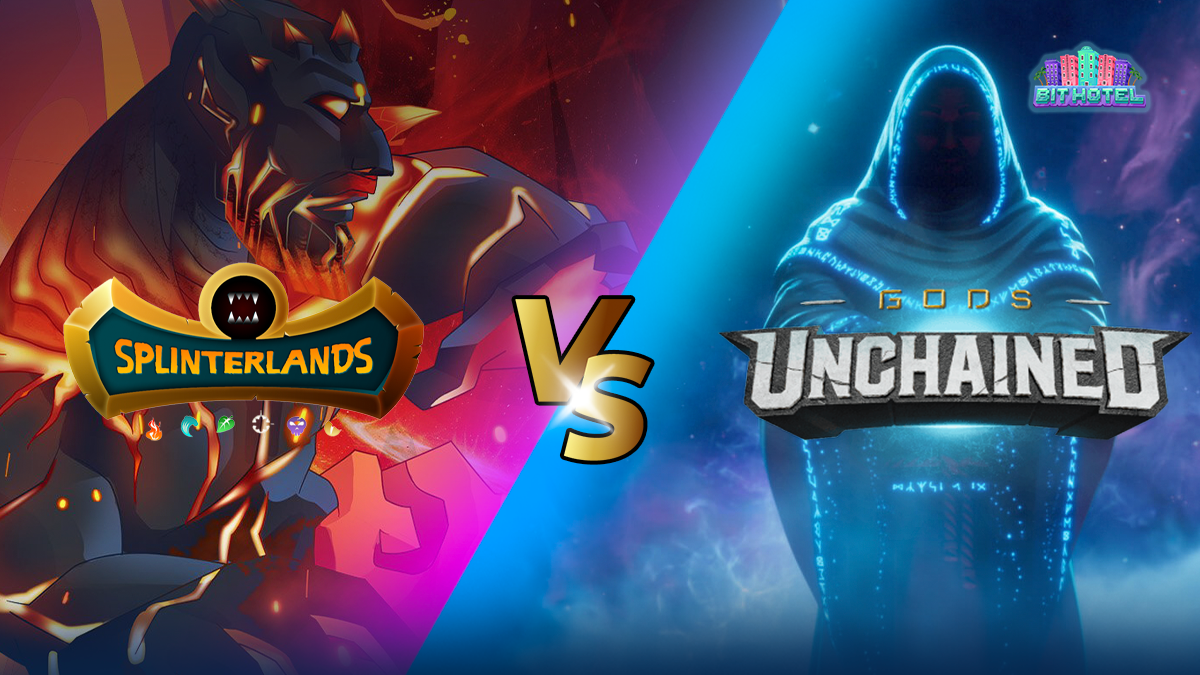6002Views 0Comments


Splinterlands versus Gods Unchained
In recent years, the world of blockchain gaming has seen significant growth, with a number of games rising to popularity. Two such games are Splinterlands and Gods Unchained. Both of these games are collectible card games that utilize blockchain technology, but they have distinct differences that set them apart from one another. In this article, we’ll compare Splinterlands and Gods Unchained to help you decide which one might be more up your alley.
Gameplay
Firstly, let’s talk about the gameplay of these two games. Splinterlands is a fantasy-themed game where players build decks of cards representing various creatures and characters. These cards have different stats, abilities, and affinities that can be combined to form unique strategies. The game involves turn-based battles where players try to defeat their opponents using their cards’ abilities and strengths.
Gods Unchained, on the other hand, is a game based on Greek mythology where players summon creatures, spells, and weapons to battle against their opponents. The game uses a mana system to play cards, with players needing to balance their mana usage with their strategic goals. The gameplay is similar to that of other collectible card games like Magic: The Gathering and Hearthstone.
Both games have a ranking system where players can climb up the ladder by winning battles against other players. However, Splinterlands has a unique reward system that allows players to earn cryptocurrency for winning battles and completing certain in-game objectives.
Art and Design
When it comes to art and design, both games have their own unique style. Splinterlands uses 2D graphics and animations that are reminiscent of classic card games, while Gods Unchained has 3D graphics and animations that are more modern and visually appealing.
Splinterlands has a more cartoony art style, with bright colors and exaggerated character designs. Gods Unchained, on the other hand, has a more realistic and detailed art style, with characters and creatures inspired by Greek mythology. The artwork of both games is well-executed, with attention to detail and unique designs that make each card feel special.
Economy
The economy of each game is an important consideration, as it affects how players interact with the game and each other. Splinterlands has a unique economy that revolves around the game’s cryptocurrency, called Dark Energy Crystals (DEC). Players can earn DEC by winning battles and completing objectives, and they can also use DEC to buy cards and other in-game items.
Gods Unchained uses a more traditional economy, where players can buy and sell cards on a marketplace using Ether, a popular cryptocurrency. The marketplace is open to all players, and the price of each card is determined by supply and demand. This allows players to earn money by buying and selling cards on the marketplace, which can be an appealing aspect of the game for some players.
Community
Finally, the community of a game is always a valuable factor. Both games have active communities with regular events and tournaments. The developers of Slpinterlands as well as gods unchained are active in the game’s Discord server, which allows players to communicate with each other and the development team. So in terms of community, none of these games will let you down.
Conclusion
In conclusion, both Splinterlands and Gods Unchained are great games for fans of collectible card games. Splinterlands has a unique reward system that allows players to earn cryptocurrency, while Gods Unchained has a more traditional economy that allows players to buy and sell cards for real money. It all comes down to personal preference.
If you are still looking for something else to play, you can always check out Bit Hotel. Completely free to play, sign up at bithotel.io with beta key ”master”.

